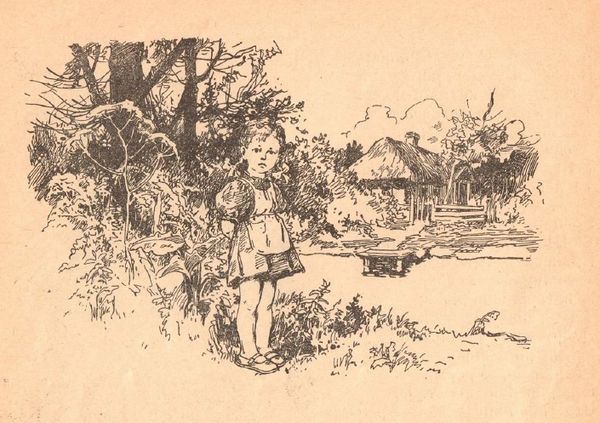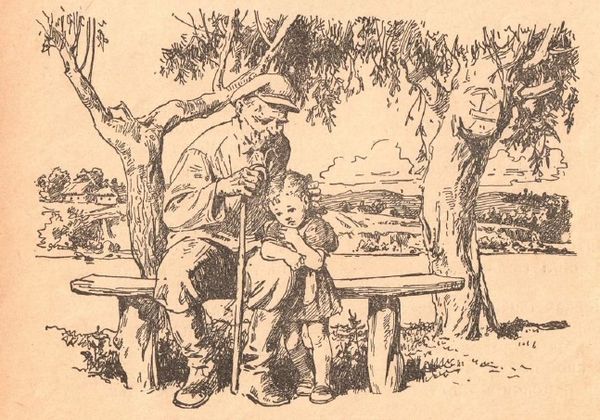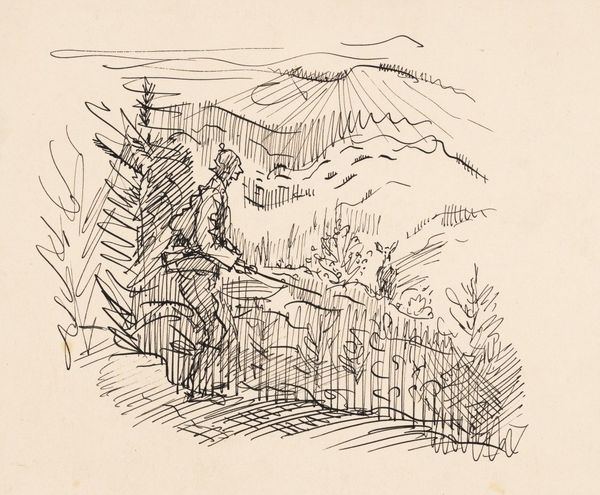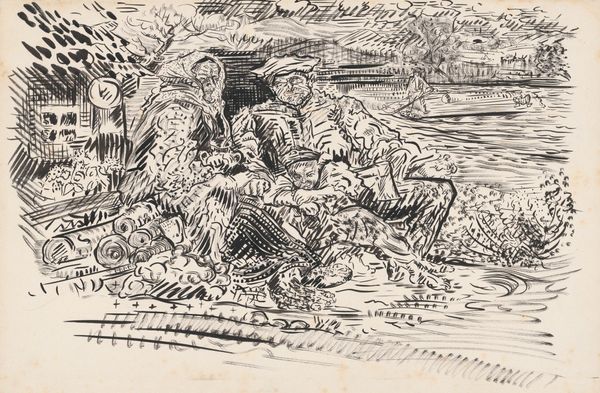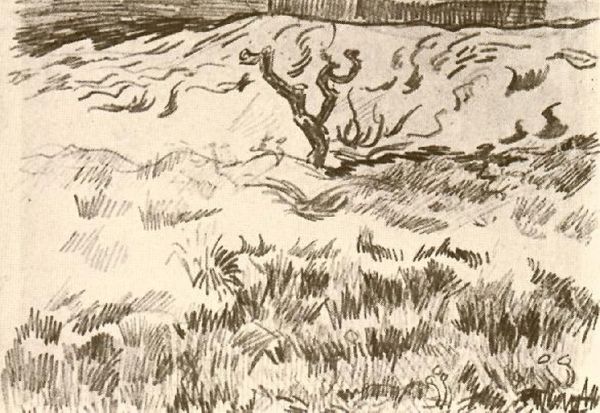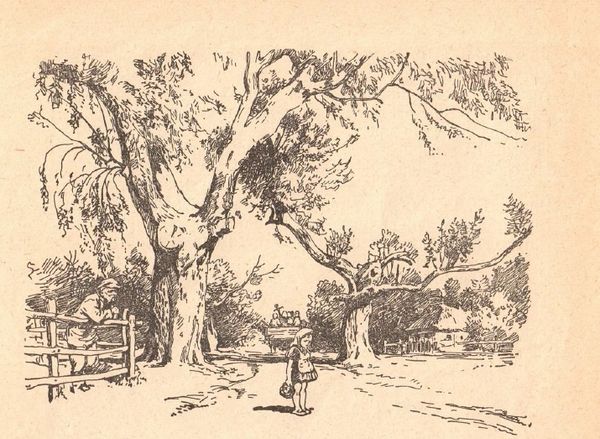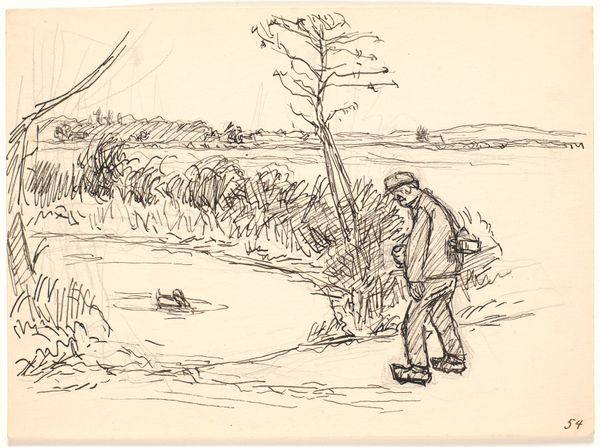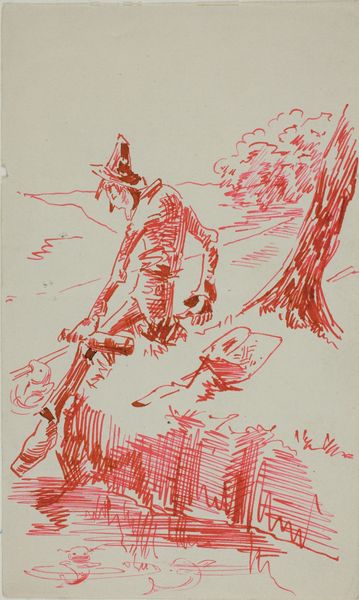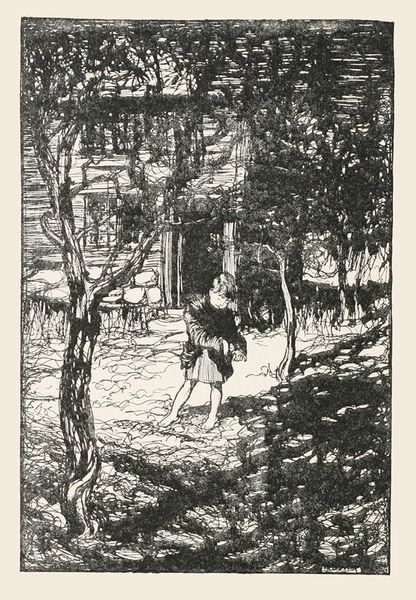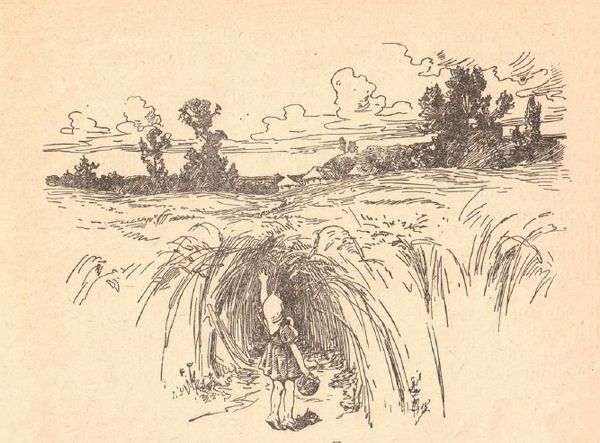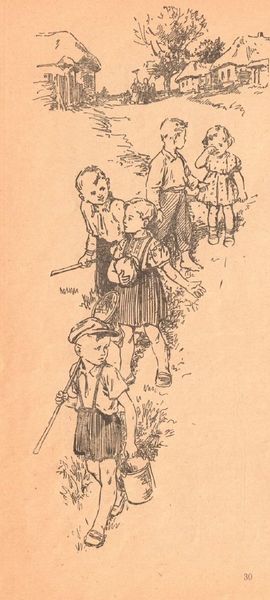
Illustration for Mikhail Stelmakh's book 'In the Hedgehog's Windmill' 1956
0:00
0:00
drawing, paper, ink
#
pen and ink
#
tree
#
drawing
#
ink drawing
#
narrative-art
#
pen drawing
#
pen illustration
#
pen sketch
#
landscape
#
soviet-nonconformist-art
#
paper
#
text
#
ink line art
#
linework heavy
#
ink
#
child
#
ink drawing experimentation
#
pen-ink sketch
#
line
#
pen work
#
genre-painting
#
botany
Copyright: Hryhorii Havrylenko,Fair Use
Curator: This illustration, dating back to 1956, is by Hryhorii Havrylenko. Titled 'Illustration for Mikhail Stelmakh's book "In the Hedgehog's Windmill"', it’s crafted using pen and ink. Editor: It’s a charming image. The high-contrast lines create an intriguing texture; almost a shimmering quality to the dense foliage and evokes a feeling of childhood exploration and the magic of discovering a secret world within the forest. Curator: Indeed. The dynamic interplay between the solid black lines and the sparse negative space guides the viewer’s eye, accentuating the form of the young girl. Note how the linework around her figure is more delicate than that of the trees surrounding her; that enhances the sense of depth, drawing her forward within the plane. Editor: I am drawn to the broader cultural context in which Havrylenko operated. Emerging from within Soviet Nonconformist Art circles; his work was inevitably intertwined with broader socio-political dialogues that permeated artistic circles throughout that era. The image encapsulates a certain freedom of expression, offering an unvarnished portrayal of everyday life away from overt political messaging. It highlights personal narratives amidst collective ones. Curator: It speaks to something deeper – this image, though tied to a specific narrative within Stelmakh's book, transcends it. Consider the universal themes: youthful wonder, the human relationship with nature. It embodies narrative art; the drawing beckons the audience into a visual dialogue, hinting at untold stories. Editor: I agree, seeing children represented positively through art offers powerful reinforcement in times of societal pressure. Furthermore, illustrations have an interesting position in history, where artworks reproduced within a book will often become a more economically and physically accessible form. Havrylenko, whether consciously or unconsciously, made his own stand on the accessibility of art and childhood representation. Curator: In its stark monochromatic simplicity, it achieves a remarkable complexity; a microcosm reflecting nature's grand design. Editor: Precisely. It makes me consider art's capacity to function not just as aesthetic adornment, but as an emblem of self-assertion.
Comments
No comments
Be the first to comment and join the conversation on the ultimate creative platform.
